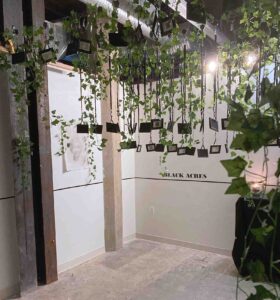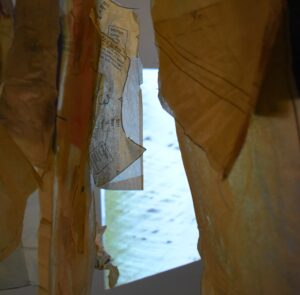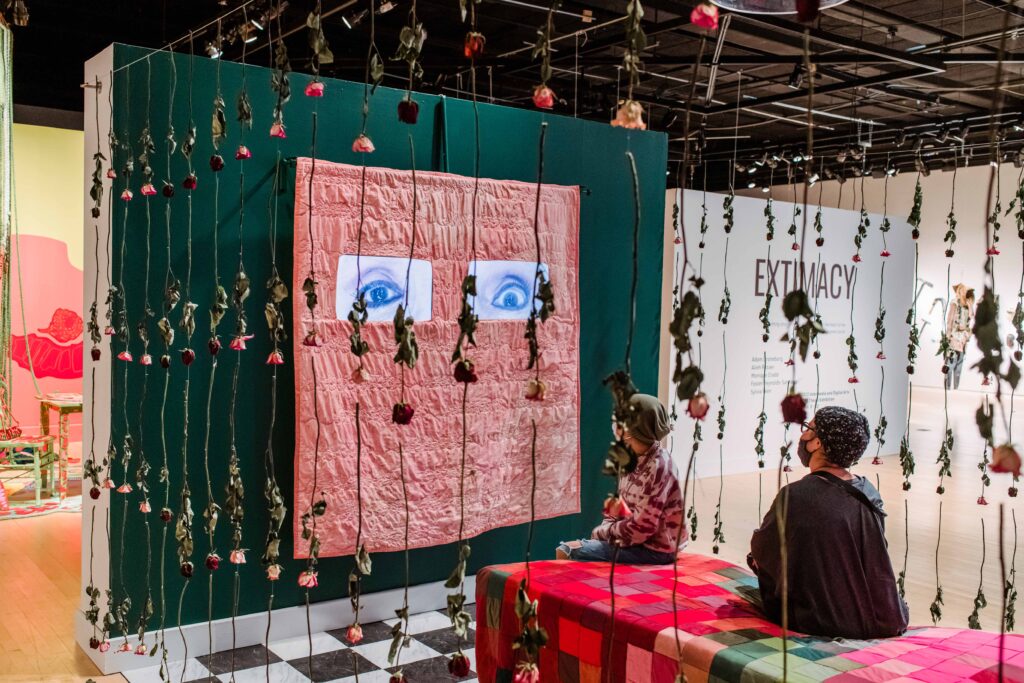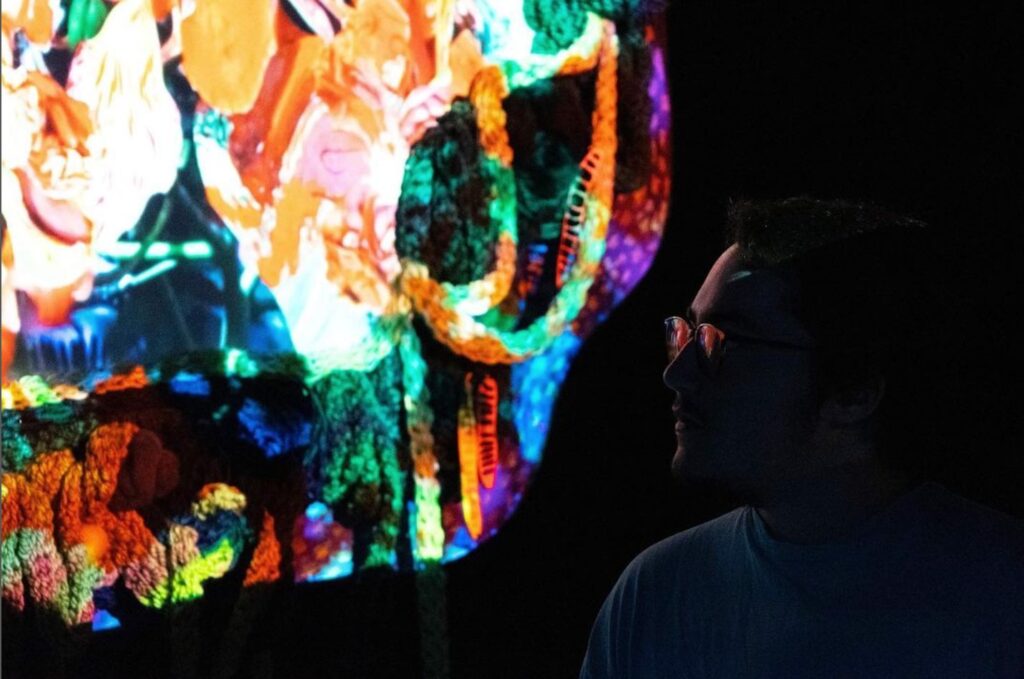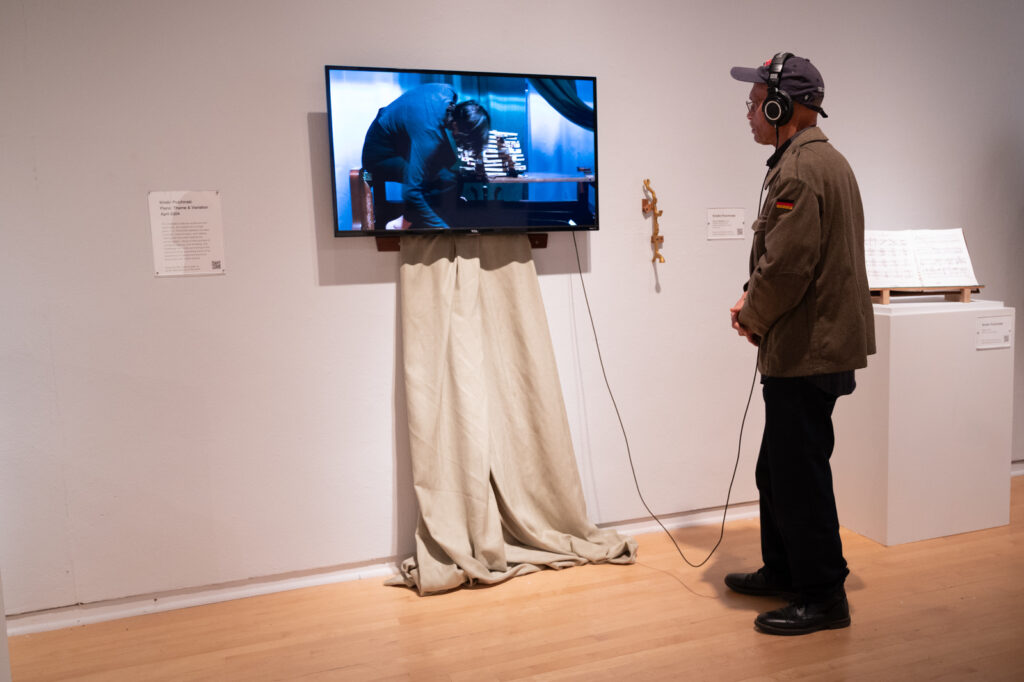MASTERS OF FINE ART IN INTERMEDIA+DIGITAL ARTS,
MFA PROGRAM IN BALTIMORE, MD.
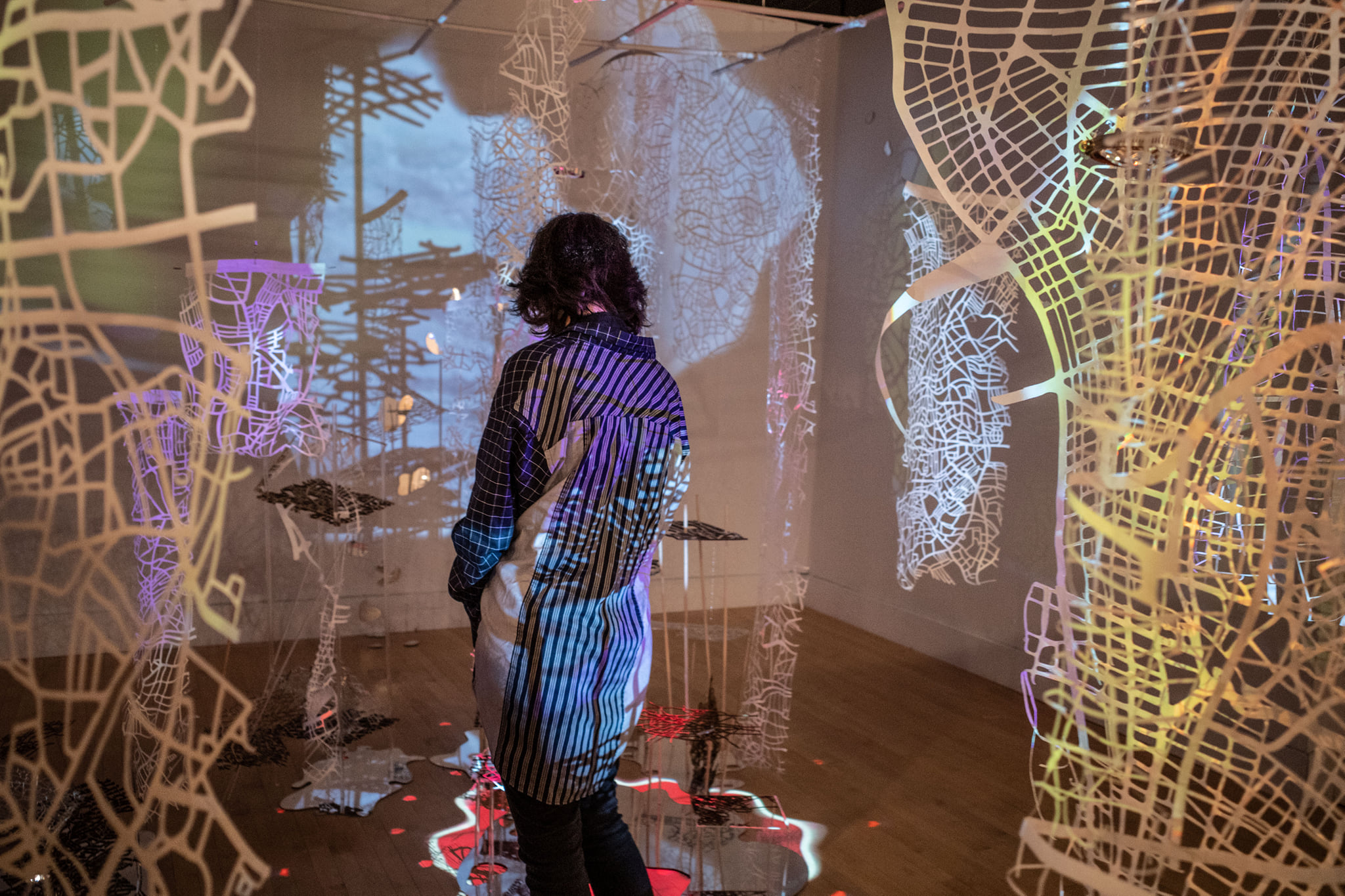 Thesis installation by Sylvia Ekken (2022)
Thesis installation by Sylvia Ekken (2022)
Vision
The Intermedia and Digital Art [ IMDA ] graduate program is committed to investigating transformations of emerging artistic practices, especially those that give rise to new processes that pose unique conceptual and social challenges. During their three-year course of study, IMDA students use the streets of Baltimore, waves of analog and digital data, and the white walls of the prestigious Center for Art, Design, and Visual Culture [ CADVC at UMBC ] as their artistic venues. Recent graduate students have pursued issues of food justice, security, transportation, place, language, identity, economics, and technology in both intellectual and formal terms, resulting in projects such as street interventions, distributed networks, physical computing, games, installations, performances, sculptural objects, prints, drawings, photographs, videos, interactive pieces, animations, public displays, and other socially engaged works. Our national and international students are guided by a transdisciplinary dialog with engaged faculty and eminent visiting artists, critics, and curators. Each student has a studio, as well as access to a range of state-of-the-art facilities including film, video and audio production, computer labs, photography, and print facilities. Financial support includes Research Assistantships that entail teaching classes and assisting in labs such as the CADVC and the renowned Imaging Research Center [ IRC ] at UMBC. The path toward the M.F.A. prepares students for a culminating thesis exhibition at the CADVC and a published written thesis.
History
A student of Buckminster Fuller and John Cage, Stan VanDerBeek created the first computer-generated animations, “Poemfield,” with Ken Knowlton at Bell Labs, 1966-1969, using Knowlton’s programming language: BEFLIX. VanDerBeek continued this vision of pushing the conventions of the fine arts while serving as Chair of UMBC’s Department of Visual Arts from 1975 to 1984. As an extension of his vision and under the leadership of David Yager, the Department founded the Imaging Research Center [ IRC ] in 1987, providing students, faculty, and professional artists an opportunity to explore 3D spaces, animation, caves, interactivity, immersion, digital mapping, and mobile device applications.
This was followed in 1989 by the launch of what is now called the Center for Art, Design, and Visual Culture [ CADVC ]. The CADVC maintains a robust traveling exhibition, publishing, and community outreach schedule and provides an additional lab space for students. In 1993, the first cohort of graduate students entered the Department’s M.F.A. in Imaging and Digital Arts [ IMDA ] program, an incubator for technologies emerging in both form and knowledge. To enhance the program’s foundation, UMBC in 1999 acquired from Alison Knowles The Dick Higgins Collection. Alison Knowles herself created the first fully computer-generated poem, “House of Dust”, with James Tenney in 1967. Higgins, one of the founding Fluxus artists along with Knowles, coined the term “intermedia” in 1966 to refer to art forms that were increasingly crossing or even fusing boundaries between studio art, poetry, books, music, performance art, and forms from other fields, such as BEFLIX or the Fortran IV programming language that Higgins used to construct some of his own works. These artists were part of a pioneering generation that transferred the knowledge and form of computer technologies from engineering into the arts. In the 2000s, when the field of digital arts became more specialized, IMDA continued to embrace emerging technologies while incorporating shifts toward socially engaged art, transdisciplinary art, and digital fabrication. In 2014, IMDA implemented the new name of Intermedia and Digital Arts to reflect its established history and persistently contemporary approach to blending digital arts dynamically with a studio, media arts, performance, and social practices.
Alumni
The IMDA program graduated its first M.F.A. cohort in 1996. Its alumni have presented their work at distinguished museums, galleries, festivals, conferences, and symposia around the world and garnered prestigious awards, scholarships, and residencies. Others have successfully pursued gallery representation, run their own galleries and artists’ spaces, worked in the film and production industry, and become educators and academic leaders at some of the most rigorous art academies and universities in the U.S. and abroad. IMDA graduates have also been part of the early wave of artists in this country to earn doctoral degrees in emerging fields of practice-based arts research, especially in service to digital media. The most notable outcome of the IMDA M.F.A. program is that graduates are prepared for a lifetime of creative productivity, having acquired the skills, focus, and commitment that will consistently propel their adventurous and personal artistic practices to new levels.
